 “Only dreamers believe in ways out. Optimism is cowardice.”
“Only dreamers believe in ways out. Optimism is cowardice.”
Oswald Spengler, Man and Technics: A Contribution to a Philosophy of Life (trans. Charles Francis Atkinson)
Terry Teachout on the arts in New York City
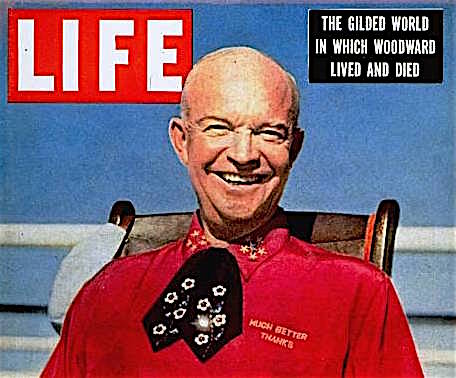 I’m very, very pleased to report that Mrs. T is getting better, slowly but—it appears—surely. Two weeks after her release from New York-Presbyterian Hospital, her stamina is gradually increasing and her spirits are quite good. It helps greatly, of course, that she’s (A) not dead and (B) back in our New York apartment again. She spent the better part of a month in a pair of windowless intensive-care units in which the doctors and nurses, competent and caring though they were, seem to have gone out of their way to wake her up whenever she fell asleep. As for the food…well, we’ll skip over that. Things are much nicer at home, where we can sit on the couch together, watch movies, and dine on home cooking, some of it prepared by the two of us and some by a neighborhood friend.
I’m very, very pleased to report that Mrs. T is getting better, slowly but—it appears—surely. Two weeks after her release from New York-Presbyterian Hospital, her stamina is gradually increasing and her spirits are quite good. It helps greatly, of course, that she’s (A) not dead and (B) back in our New York apartment again. She spent the better part of a month in a pair of windowless intensive-care units in which the doctors and nurses, competent and caring though they were, seem to have gone out of their way to wake her up whenever she fell asleep. As for the food…well, we’ll skip over that. Things are much nicer at home, where we can sit on the couch together, watch movies, and dine on home cooking, some of it prepared by the two of us and some by a neighborhood friend.
So far Mrs. T hasn’t felt up to leaving the apartment for anything other than follow-up visits to her doctors at New York-Presbyterian, but we’re planning a visit to our Connecticut farmhouse, where we’ll drive around the countryside, open the mail, and enjoy the quiet pleasures of being elsewhere. We’ve also scheduled an October visit to Philadelphia’s Penn Transplant Institute in order to resume the process of getting her listed for transplant there (she’s already listed in New York).
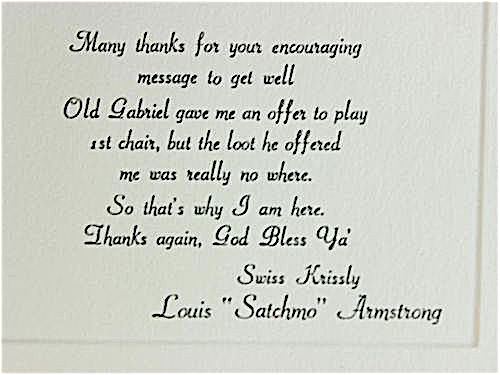 My own life, which was turned upside down when my beloved spouse was taken ill without warning in Cape May last month, has started to right itself. I’m seeing friends and going to shows again, and later today I’ll be taping the latest in an occasional series of podcasts in which Titus Techera and I talk about films (we’re discussing Nicholas Ray’s On Dangerous Ground). As for Three on the Aisle, which has been on a brief hiatus, Peter Marks, Elisabeth Vincentelli, and I are recording a brand-new episode next week.
My own life, which was turned upside down when my beloved spouse was taken ill without warning in Cape May last month, has started to right itself. I’m seeing friends and going to shows again, and later today I’ll be taping the latest in an occasional series of podcasts in which Titus Techera and I talk about films (we’re discussing Nicholas Ray’s On Dangerous Ground). As for Three on the Aisle, which has been on a brief hiatus, Peter Marks, Elisabeth Vincentelli, and I are recording a brand-new episode next week.
To the countless people who sent their good wishes to the two of us, we are and will always be grateful beyond words. You warmed our hearts at a time when the world looked dark. Yes, we still have a long, unpredictable slog ahead of us, but we are both full of hope.
In today’s Wall Street Journal I review an important off-Broadway revival of Bernard Shaw’s Heartbreak House. Here’s an excerpt.
* * *
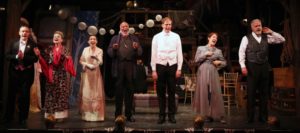 David Staller is best known as the artistic director of Project Shaw, a series of semi-staged concert readings of the 60-odd plays of George Bernard Shaw that he has presented monthly in Manhattan since 2006. But he has also directed fully staged off-Broadway versions of several Shaw plays, including the Irish Repertory Theatre’s 2012 revival of “Man and Superman” and a 2016 production of “Widower’s Houses” mounted in collaboration with the now-defunct TACT/The Actors Company Theatre, both of which were not merely excellent but exceptionally memorable. Now Mr. Staller has taken on “Heartbreak House,” one of Shaw’s most challenging plays, with altogether extraordinary results.
David Staller is best known as the artistic director of Project Shaw, a series of semi-staged concert readings of the 60-odd plays of George Bernard Shaw that he has presented monthly in Manhattan since 2006. But he has also directed fully staged off-Broadway versions of several Shaw plays, including the Irish Repertory Theatre’s 2012 revival of “Man and Superman” and a 2016 production of “Widower’s Houses” mounted in collaboration with the now-defunct TACT/The Actors Company Theatre, both of which were not merely excellent but exceptionally memorable. Now Mr. Staller has taken on “Heartbreak House,” one of Shaw’s most challenging plays, with altogether extraordinary results.
“Heartbreak House” was long one of Shaw’s least popular plays, mainly because of its verbosity (the 1920 premiere ran for more than four hours). Since it went out of copyright, though, it’s come to be staged more often in the U.S., in part because, like “Hamlet,” it can now be cut to a manageable length. This also allows directors to put a personal spin on Shaw’s acid portrait of the Shotovers, a family of haute-bourgeoisie eccentrics whose members, for all their charm, are (as one of them puts it) “useless futile creatures” who decline to do anything to fix the corrupt, unjust Vicwardian society in which they live. Instead, they look on placidly at the German planes that bomb their country villa at play’s end…
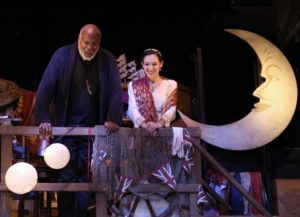 Unlike the other “Heartbreak Houses” that I’ve reviewed, all of which were essentially traditional in approach, this version, which runs for a coruscating two hours and 40 minutes, is a conceptual staging, one whose ingenious framing device intensifies the effect of Shaw’s text instead of smothering it. Inspired by a wartime performance of the play in which Hermione Gingold took part during the London Blitz of 1940, it is set in a theater basement that has been lined with sandbags and turned into an air-raid shelter. As the sirens howl, the occupants of the theater take cover, and the actors who had been performing for them upstairs now entertain their captive audience by improvising a version of “Heartbreak House” using the props stored in the shelter.
Unlike the other “Heartbreak Houses” that I’ve reviewed, all of which were essentially traditional in approach, this version, which runs for a coruscating two hours and 40 minutes, is a conceptual staging, one whose ingenious framing device intensifies the effect of Shaw’s text instead of smothering it. Inspired by a wartime performance of the play in which Hermione Gingold took part during the London Blitz of 1940, it is set in a theater basement that has been lined with sandbags and turned into an air-raid shelter. As the sirens howl, the occupants of the theater take cover, and the actors who had been performing for them upstairs now entertain their captive audience by improvising a version of “Heartbreak House” using the props stored in the shelter.
Doing “Heartbreak House” in this way requires a perfectly believable set, and Brian Prather and Toby Algya, the scenic and sound designers, deliver the goods, turning the Lion Theatre into an exact replica of a cluttered London bomb shelter….
It is, however, Mr. Staller’s direction that gives wing to the show. The scale is very small—the Lion Theatre has only 88 seats—and the theatrical effects mostly subtle, as befits a director who has put together so many staged readings of Shaw’s plays on a budgetary shoestring. But every gesture lands with the utmost potency…
* * *
Read the whole thing here.
London Can Take It!, a 1940 British propaganda film about the London Blitz directed by Humphrey Jennings and Harry Watt and narrated by Quentin Reynolds:
 “He who expresses his opinion in public must expect public criticism in return: but, speaking personally, I have found that the only truly hurtful criticism is that which is justified.”
“He who expresses his opinion in public must expect public criticism in return: but, speaking personally, I have found that the only truly hurtful criticism is that which is justified.”
Theodore Dalrymple, Benefits of Non-Production: Part One (New English Review, December 2017)
In today’s Wall Street Journal “Sightings” column, which appears in the paper’s online edition, I consider this year’s listing of the plays and musicals most frequently produced by American high schools, and what it tells us about what the students who do those plays are learning from them. Here’s an excerpt.
* * *
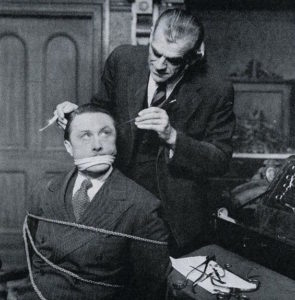 What’s a play that everybody knows? “Arsenic and Old Lace” fits the bill—but why? To be sure, Joseph Kesselring’s 1941 black comedy about a family of maniacs, homicidal and otherwise, was a huge Broadway hit that was subsequently turned into a movie starring Cary Grant, then performed four times on network TV. In addition, regional theaters still mount “Arsenic and Old Lace” often enough that I’ve reviewed it three times, most recently last month in New Jersey. But it’s been three decades since “Arsenic and Old Lace” was last seen on Broadway, and a half-century since it was last done on TV. Nor is Kesselring’s play a classic: It’s just a very well-made commercial comedy. So what explains the unlikely fact that so many literate Americans still recognize the title of a 77-year-old play that by all rights ought to be long forgotten?
What’s a play that everybody knows? “Arsenic and Old Lace” fits the bill—but why? To be sure, Joseph Kesselring’s 1941 black comedy about a family of maniacs, homicidal and otherwise, was a huge Broadway hit that was subsequently turned into a movie starring Cary Grant, then performed four times on network TV. In addition, regional theaters still mount “Arsenic and Old Lace” often enough that I’ve reviewed it three times, most recently last month in New Jersey. But it’s been three decades since “Arsenic and Old Lace” was last seen on Broadway, and a half-century since it was last done on TV. Nor is Kesselring’s play a classic: It’s just a very well-made commercial comedy. So what explains the unlikely fact that so many literate Americans still recognize the title of a 77-year-old play that by all rights ought to be long forgotten?
The simple and surprising answer might be found among the kids shuffling back to classes after summer vacation: Most of us did it, or saw it, in high school.
For the past eight decades, Dramatics, a monthly magazine for theater students and teachers, has published an annual survey of the plays and musicals that are most frequently produced by U.S. high schools. Nearly 4,000 schools responded to the 2017-18 survey, whose results were released last month. The musicals are a predictable mix of modern-day Broadway hits topped by “Beauty and the Beast” and “The Addams Family.” The plays, however, are something else again. In descending order, they are:
1. “Almost, Maine”
2. “A Midsummer Night’s Dream”
3. “Peter and the Starcatcher”
4. “Alice in Wonderland”
5. “Our Town”
6. “Twelve Angry Men”
7. “The Crucible”
8. “Arsenic and Old Lace”
9. “A Christmas Carol”
10. “Radium Girls”
Certain aspects of this list strike me as just a bit suspect. To begin with, it contains only one pre-20th-century play, “A Midsummer Night’s Dream,” the most perenially popular of Shakespeare’s sublime comedies. What’s more, the only other indisputable classic is Thornton Wilder’s “Our Town.”…
What of the other plays? That’s where things get interesting—in a manner of speaking….
* * *
Read the whole thing here.
To read or listen to NPR’s story about the latest survey of popular high-school plays—and to look at the historical database of popular high-school plays compiled by NPR—go here.
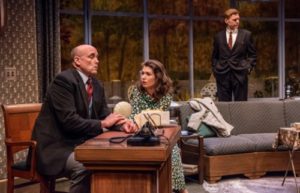 Here’s my list of recommended Broadway, off-Broadway, and out-of-town shows, updated weekly. In all cases, I gave these shows favorable reviews (if sometimes qualifiedly so) in The Wall Street Journal when they opened. For more information, click on the title.
Here’s my list of recommended Broadway, off-Broadway, and out-of-town shows, updated weekly. In all cases, I gave these shows favorable reviews (if sometimes qualifiedly so) in The Wall Street Journal when they opened. For more information, click on the title.
BROADWAY:
• The Band’s Visit (musical, PG-13, virtually all shows sold out last week, reviewed here)
• Dear Evan Hansen (musical, PG-13, all shows sold out last week, reviewed here)
• Hamilton (musical, PG-13, Broadway transfer of off-Broadway production, all shows sold out last week, reviewed here)
• My Fair Lady (musical, G, nearly all shows sold out last week, reviewed here)
OFF BROADWAY:
• Days to Come (drama, G, not suitable for children, closes Oct. 6, reviewed here)
CLOSING SOON OFF BROADWAY:
• Be More Chill (musical, PG-13, closes Sept. 30, reviewed here)
CLOSING TOMORROW IN CAPE MAY, N.J.:
• The Lion in Winter (drama, PG-13, closes Sept. 14, reviewed here)
CLOSING TONIGHT IN EAST HADDAM, CONN.:
• Oliver! (musical, PG-13, reviewed here)
 “ That people should use their freedom of expression for this! It is enough to make one long for censorship: the censorship under which most of the world’s greatest art has always been produced.”
“ That people should use their freedom of expression for this! It is enough to make one long for censorship: the censorship under which most of the world’s greatest art has always been produced.”
Theodore Dalrymple, Benefits of Non-Production: Part One (New English Review, December 2017)
An ArtsJournal Blog